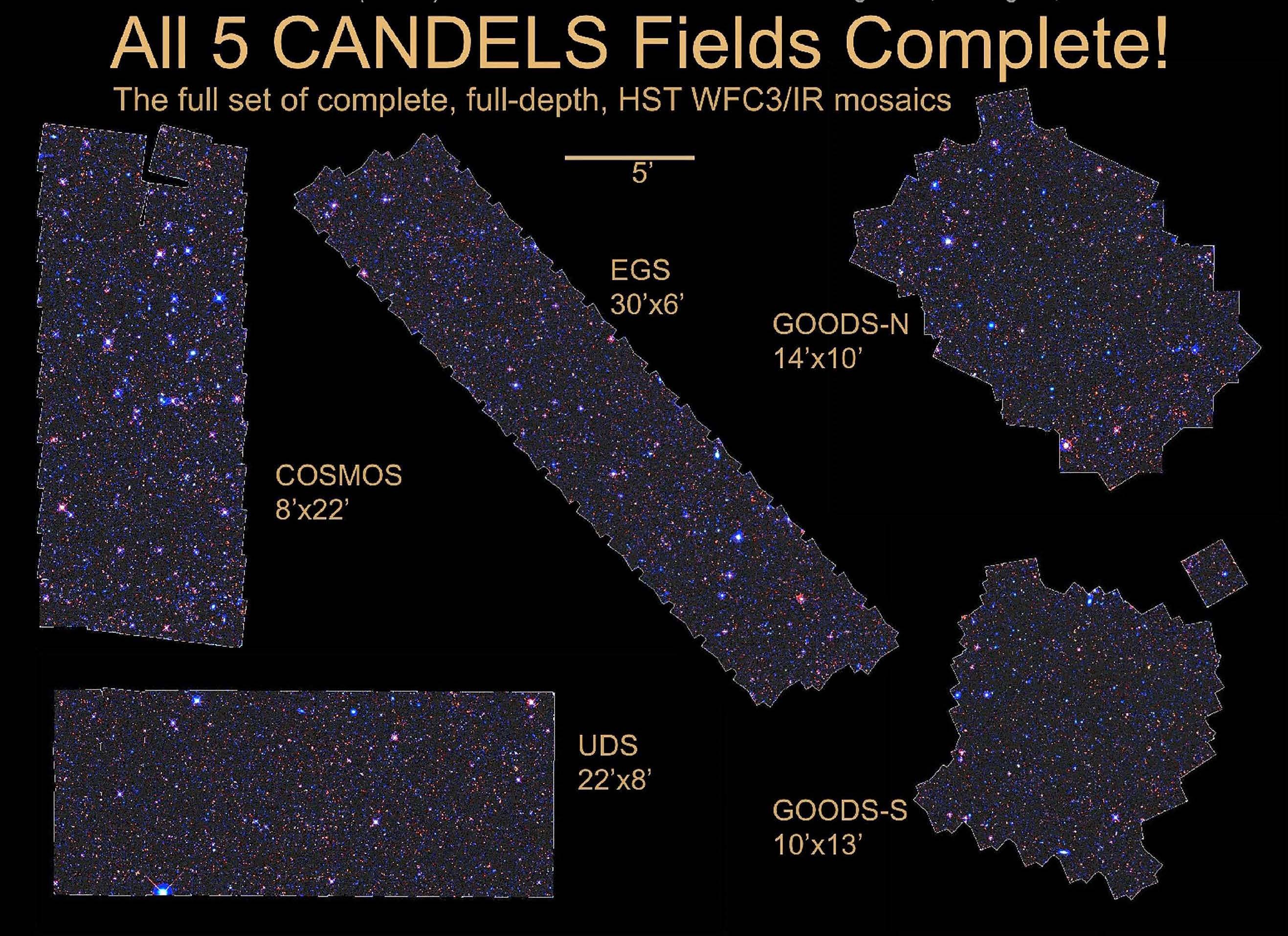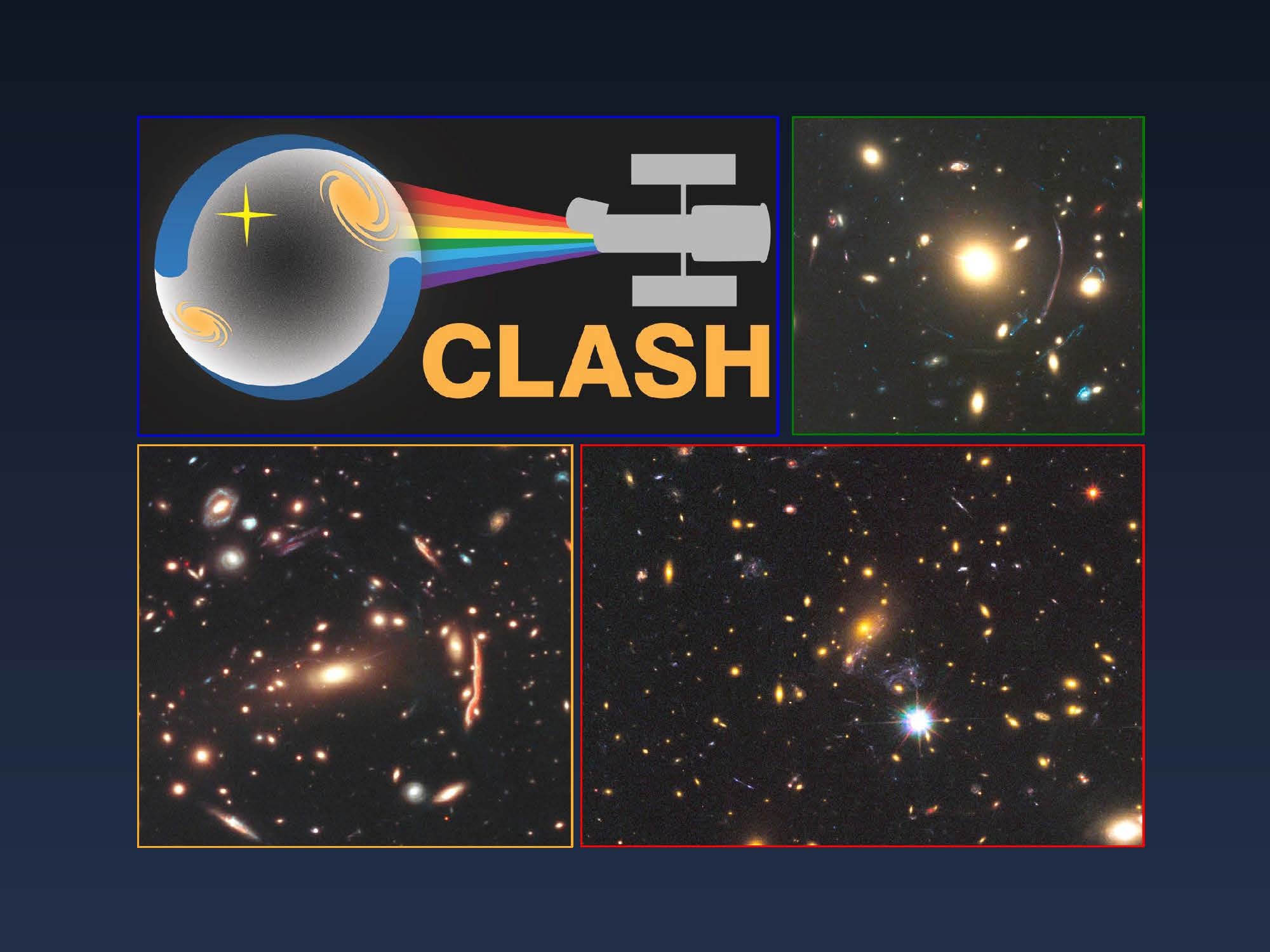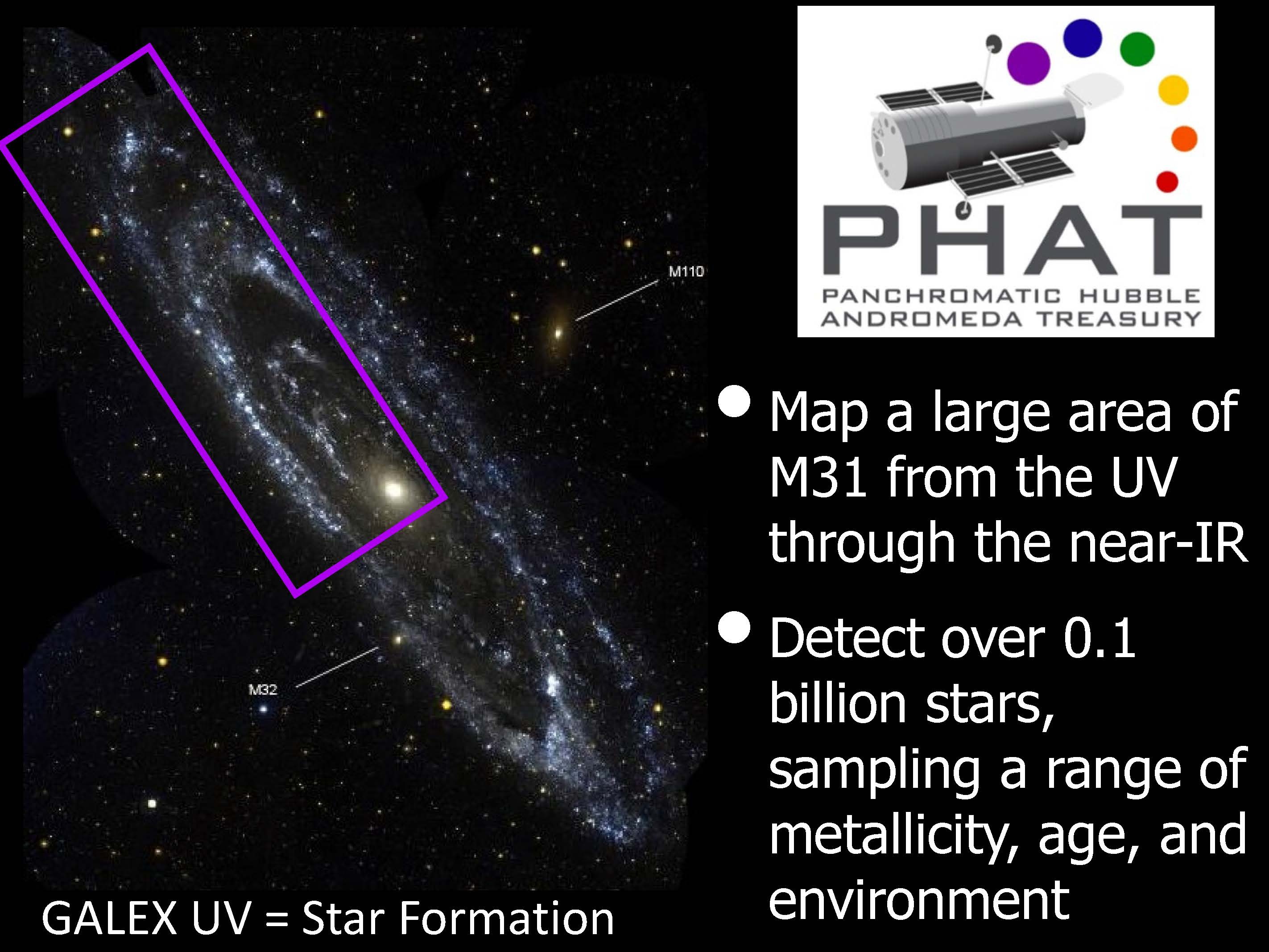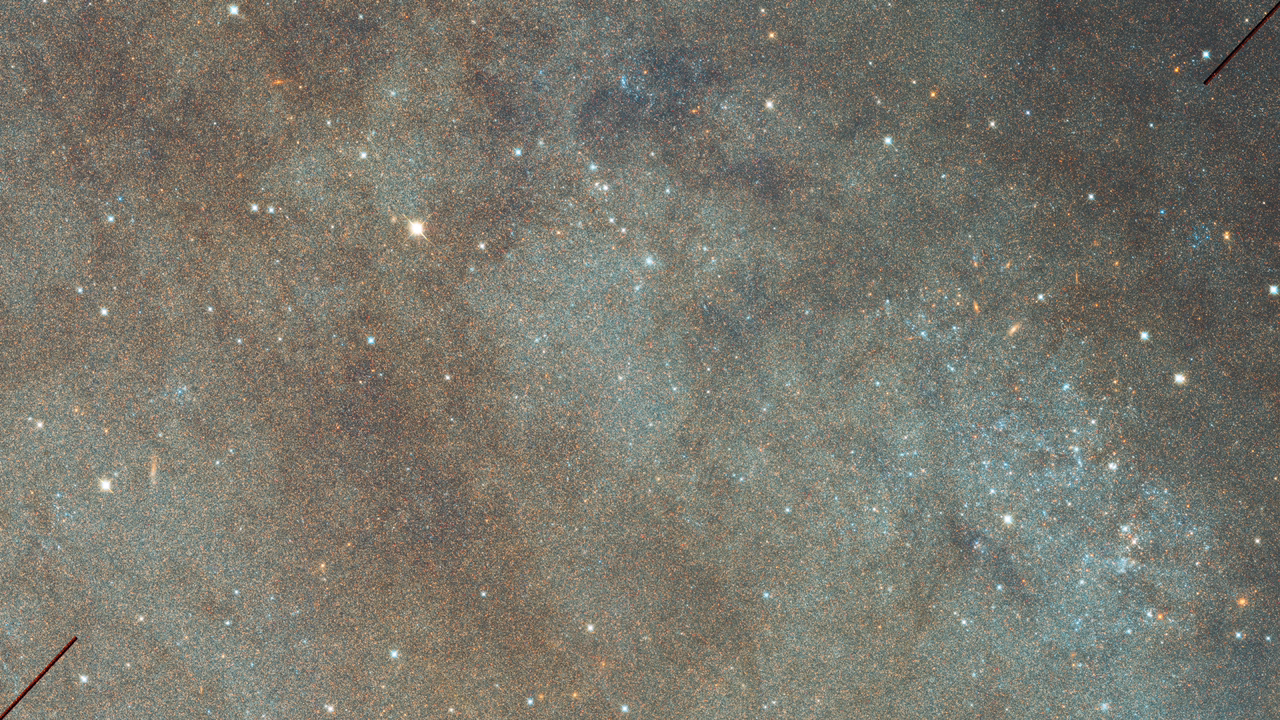Background
The concept of Multi-Cycle Treasury (MCT) programs was developed as a mechanism to allow the Hubble Space Telescope community to address high-impact science questions that require observations on a scale that cannot be supported by the standard time allocation process. MCT programs were defined as GO programs that required at least 450 orbits. There was no restriction or pre-selection of science topics. Up to 500 GO orbits together with 250 orbits of Director's Discretionary time were made available for these programs in each of Cycles 17, 18 and 19. Following the highly-successful Servicing Mission 4, the Call for MCT proposals was issued in August 2009. A total of 39 proposals were received and reviewed by a dedicated Telescope Allocation Committee that met in January 2010. Based on the TAC recommendations, the STScI Director, Matt Mountain, approved three programs:
- CANDELS: Cosmic Assembly Near-IR Deep Extragalactic Legacy Survey
- PI: S. Faber (UCSC) co-PI: H. Ferguson (STScI)
- WFC3 and ACS imaging of multiple fields to probe galaxy assembly, coupled with a high-redshift supernova survey. 902 orbits.
- Through a Lens, Darkly—New Constraints on the Fundamental Components of the Cosmos
- PI: M. Postman (STScI)
- A multicolor (14-band) imaging survey of 25 galaxy clusters, coupled with a high-redshift supernova search in coordinated parallel observations, CLASH. 524 orbits.
- A Panchromatic Hubble Andromeda Survey
- PI J. Dalcanton (U. Washington)
- UV/optical/near-IR imaging of one quadrant of M31, PHAT. 834 orbits.
Short descriptions of each program are given below. For further details on the selection process, see this STScI Newsletter article. The observations for all programs were complete by late 2013 and the October 2013 Space Telescope User Committee meeting includes status reports from all three projects.
1. CANDELS: Cosmic Assembly Near-IR Deep Extragalactic Legacy Survey
Abstract:
The Cosmic Assembly Near-IR Deep Extragalactic Legacy Survey (CANDELS) is designed to document the ?rst third of galactic evolution from z = 8 to 1.5 via deep imaging of more than 250, 000 galaxies with WFC3/IR and ACS. It will also find the first Type Ia SNe beyond z > 1.5 and establish their accuracy as standard candles for cosmology. Five premier multi-wavelength sky regions selected from the Spitzer Extragalactic Deep Survey (SEDS) provide complementary IRAC imaging data down to 26.5 AB mag, a unique resource for stellar masses at all redshifts. The use of ?ve widely separated ?elds mitigates cosmic variance and yields statistically robust and complete samples of galaxies down to 10^9 solar masses out to z ~ 8.
The program merges two originally separate MCT proposals. The Faber program incorporates a “Wide” imaging survey in three separate fields to ~2 orbit depth over ~0.2 sq. degrees, plus a “Deep” imaging survey to ~12 orbit depth in the two GOODS regions over ~0.04 sq. degrees. When combined with ultra-deep imaging from the Hubble Ultradeep Field program (GO 11563), the result is a three-tiered strategy that efficiently samples both bright/rare and faint/common extragalactic objects. The Ferguson program adds an extensive high-redshift Type Ia SNe search plus ultraviolet "daytime" UVIS exposures in GOODS-N to exploit the CVZ opportunity in that field.
The initial set of observations were taken as HST program GO 12060.
A more extensive description of the program and some of the early science results can be found in this Newsletter article.
2. CLASH: Cluster Lensing and Supernova survey with Hubble
Abstract:
As the most massive objects in the universe, galaxy clusters represent important signposts in our story of structure evolution, and are the ultimate telescopic lenses, placing gravitationally lensed galaxies from the earliest epochs in comfortable reach for careful study. We take full advantage of the refurbished ACS and WFC3 cameras to deliver deep 14-filter images of 25 carefully chosen clusters. These will enable us to address timely and substantive questions about dark matter, dark energy, and galaxy evolution well beyond z=7. These X-ray clusters are chosen to be free of lensing bias and to span a wide range of redshift and mass. By combining strong and weak lensing, we will obtain the definitive mass profile of relaxed clusters to confront the distinctive prediction of the standard Lambda-CDM model. Detailed maps of internal structure will be enabled by ~1, 000 new multiply-imaged lensed sources to AB=26, all with precise (2% x (1+z)) photometric redshift measurements, thanks to WFC3's UV and IR coverage. A supernovae search in parallel (with low magnification uncertainties) will extend the Hubble diagram of SN1a to z>1.5, testing the constancy of dark energy with time and probing progenitor evolution. Our homogeneous panchromatic deep imaging of this cluster sample will constitute a vast legacy archive for studies of the formation and evolution of structure.
The initial set of observations were taken as HST program 12065.
A more extensive description of the program and some of the early science results can be found in this Newsletter article.
3. PHAT: Panchromatic Hubble Andromeda Treasury
Abstract:
We propose to image the north east quadrant of M31 to deep limits in the UV, optical, and near-IR. HST imaging should resolve the galaxy into more than 100 million stars, all with common distances and foreground extinctions. UV through NIR stellar photometry (F275W, F336W with WFC3/UVIS, F475W and F814W with ACS/WFC, and F110W and F160W with WFC3/NIR) will provide effective temperatures for a wide range of spectral types, while simultaneously mapping M31's extinction. Our central science drivers are to: understand high-mass variations in the stellar IMF as a function of SFR intensity and metallicity; capture the spatially-resolved star formation history of M31; study a vast sample of stellar clusters with a range of ages and metallicities. These are central to understanding stellar evolution and clustered star formation; constraining ISM energetics; and understanding the counterparts and environments of transient objects (novae, SNe, variable stars, x-ray sources, etc.). As its legacy, this survey adds M31 to the Milky Way and Magellanic Clouds as a fundamental calibrator of stellar evolution and star-formation processes for understanding the stellar populations of distant galaxies. Effective exposure times are 977s in F275W, 1368s in F336W, 4040s in F475W, 4042s in F814W, 699s in F110W, and 1796s in F160W, including short exposures to avoid saturation of bright sources. These depths will produce photon-limited images in the UV. Images will be crowding-limited in the optical and NIR, but will reach below the red clump at all radii. The images will reach the Nyquist sampling limit in F160W, F475W, and F814W.
The initial set of observations were taken as HST program GO 12055.
A more extensive description of the program and the initial science results can be found in this Newsletter article.




